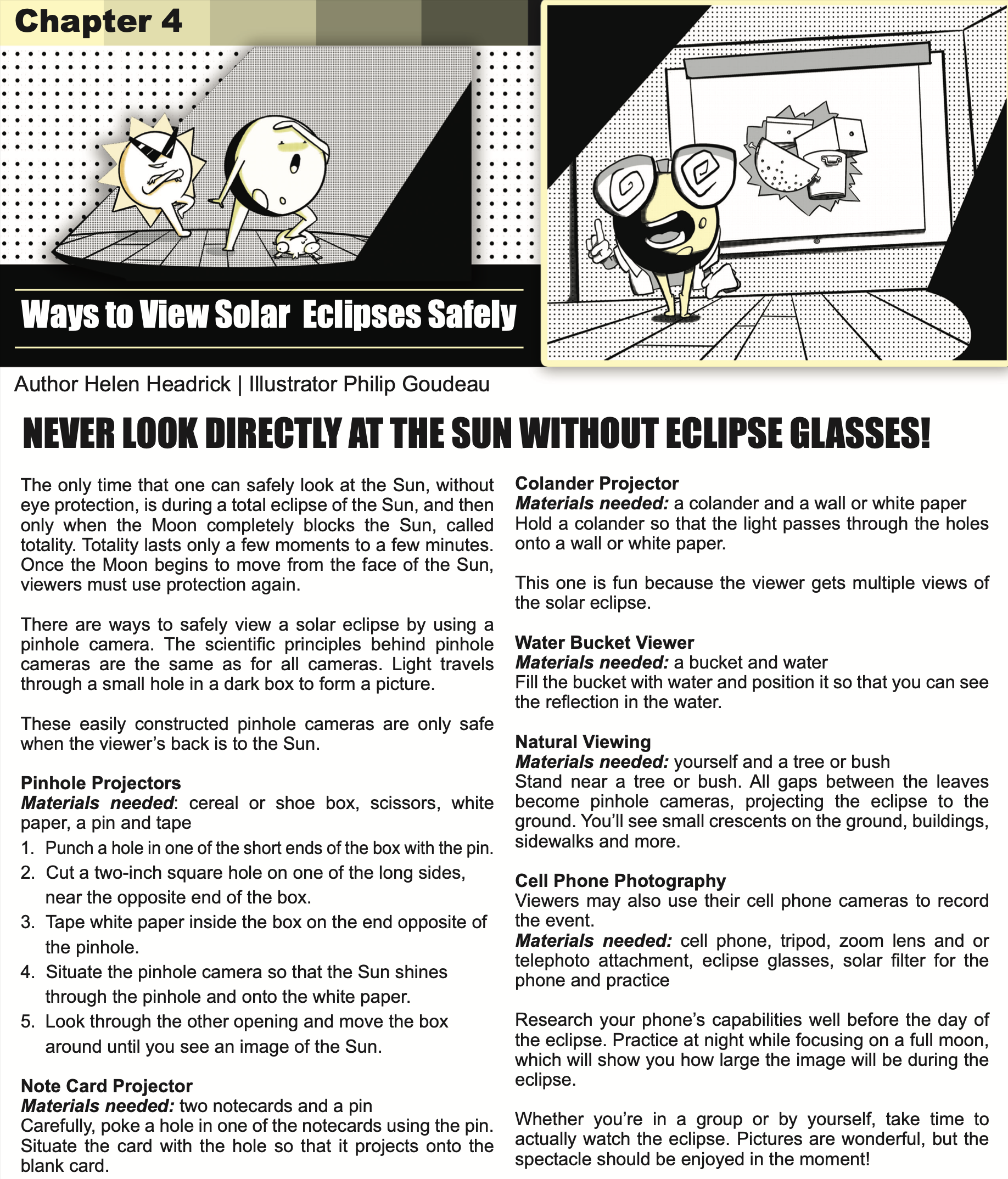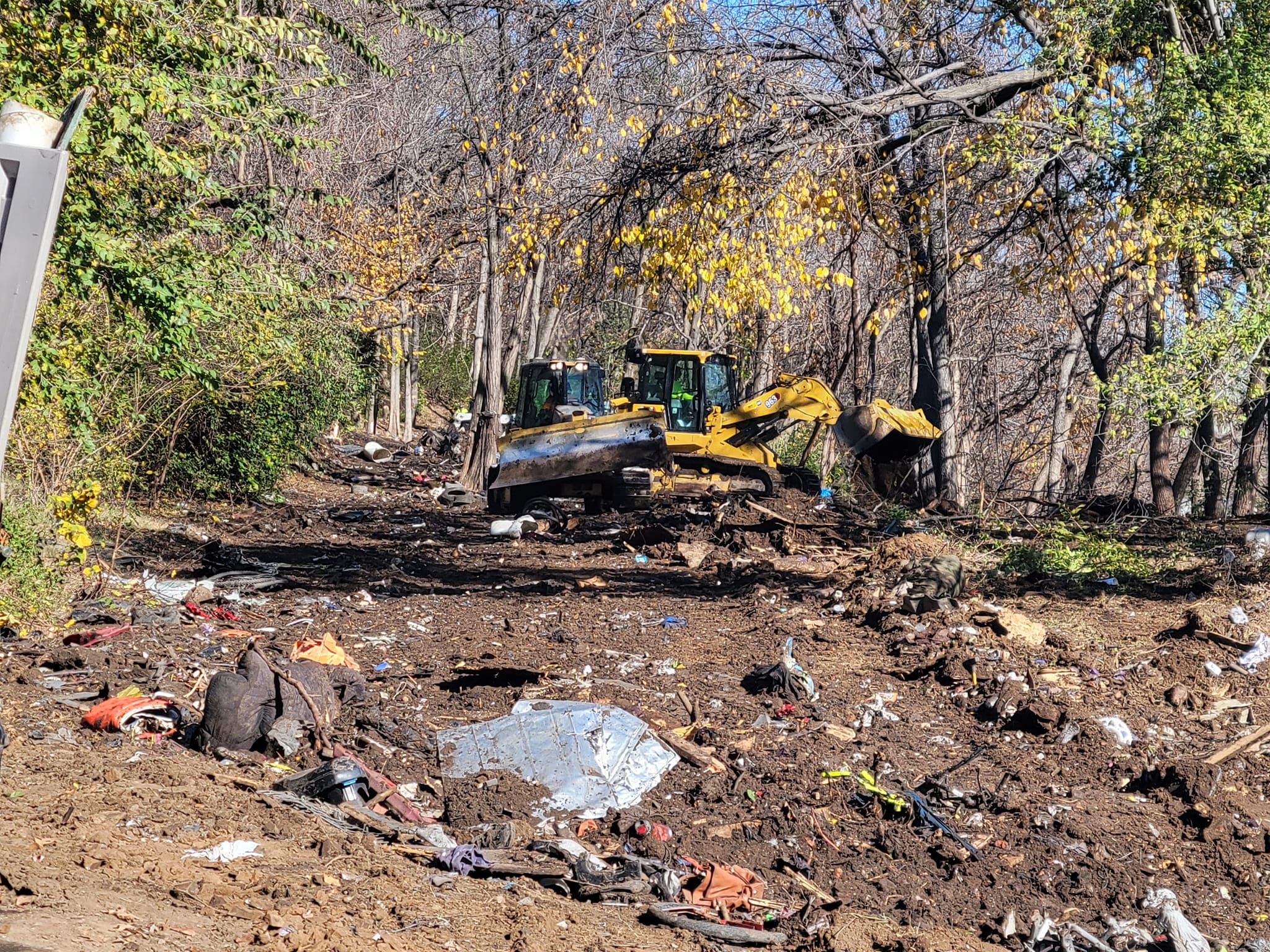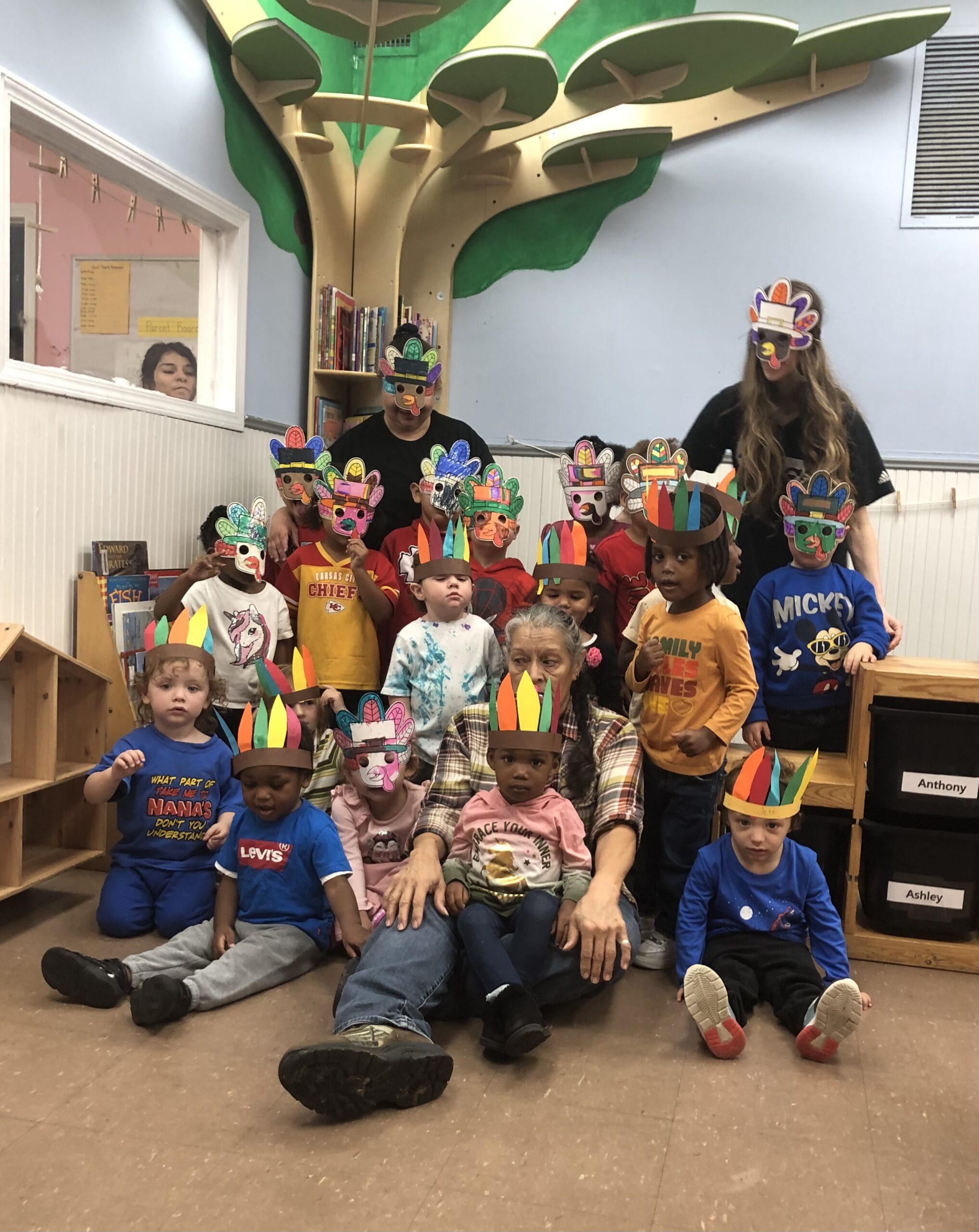
Author Helen Headrick | Illustrator Philip Goudeau
NEVER LOOK DIRECTLY AT THE SUN WITHOUT ECLIPSE GLASSES!
The only time that one can safely look at the Sun, without eye protection, is during a total eclipse of the Sun, and then only when the Moon completely blocks the Sun, called totality. Totality lasts only a few moments to a few minutes. Once the Moon begins to move from the face of the Sun, viewers must use protection again.
There are ways to safely view a solar eclipse by using a pinhole camera. The scientific principles behind pinhole cameras are the same as for all cameras. Light travels through a small hole in a dark box to form a picture.
These easily constructed pinhole cameras are only safe when the viewer’s back is to the Sun.
Pinhole Projectors
Materials needed: cereal or shoe box, scissors, white paper, a pin and tape
1. Punch a hole in one of the short ends of the box with the pin.
2. Cut a two-inch square hole on one of the long sides, near the opposite end of the box.
3. Tape white paper inside the box on the end opposite of the pinhole.
4. Situate the pinhole camera so that the Sun shines through the pinhole and onto the white paper.
5. Look through the other opening and move the box around until you see an image of the Sun.
Note Card Projector
Materials needed: two notecards and a pin
Carefully, poke a hole in one of the notecards using the pin. Situate the card with the hole so that it projects onto the blank card.
Colander Projector
Materials needed: a colander and a wall or white paper
Hold a colander so that the light passes through the holes onto a wall or white paper.
This one is fun because the viewer gets multiple views of the solar eclipse.
Water Bucket Viewer
Materials needed: a bucket and water
Fill the bucket with water and position it so that you can see the reflection in the water.
Natural Viewing
Materials needed: yourself and a tree or bush
Stand near a tree or bush. All gaps between the leaves become pinhole cameras, projecting the eclipse to the ground. You’ll see small crescents on the ground, buildings, sidewalks and more.
Cell Phone Photography
Viewers may also use their cell phone cameras to record the event.
Materials needed: cell phone, tripod, zoom lens and or telephoto attachment, eclipse glasses, solar filter for the phone and practice. Research your phone’s capabilities well before the day of the eclipse. Practice at night while focusing on a full moon, which will show you how large the image will be during the eclipse.
Whether you’re in a group or by yourself, take time to actually watch the eclipse. Pictures are wonderful, but the spectacle should be enjoyed in the moment!

















